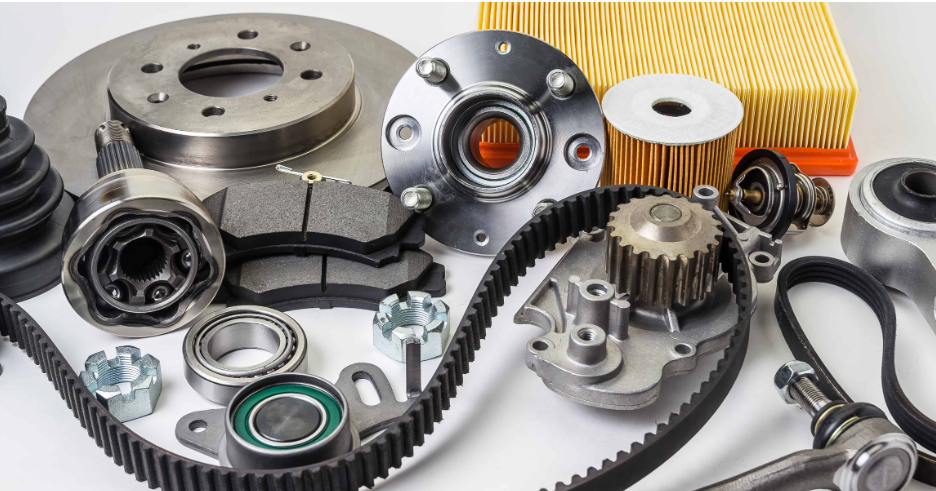Keeping good air quality inside a truck's braking system really matters if we want those brake pads to last longer. When moist air isn't properly filtered out, it creates bad conditions inside the braking system and shortens the life of the pads quite a bit. Mechanics see this all the time because water in the air actually reacts chemically with the materials used in modern brake pads, causing them to wear down faster than they should. Installing and regularly using air dryers makes a big difference here. These devices remove moisture from the compressed air system, so the pads stay protected and don't need replacing as often. For anyone responsible for maintaining commercial vehicles, checking air quality alongside regular brake inspections becomes part of smart maintenance practices that save money over time while keeping safety standards high on the road.
### Corrosion Prevention in Pneumatic ComponentsWater getting into pneumatic systems causes serious corrosion problems that really mess with how brakes work properly. According to recent industry reports, fixing corrosion from too much moisture eats up around 30% of what companies spend on maintenance each year. Air dryers help cut down on all that humidity inside the system, which makes a big difference in preventing these kinds of issues. When systems stay dry, it means fewer breakdowns and saves money because brake shoes don't need replacing as often. For fleet operators looking after their vehicles, installing good quality air drying equipment isn't just smart maintenance it's actually one of the most important investments they can make to keep those expensive brake components working at peak performance for longer periods.
### Oil Contamination Risks in Modern Truck SystemsWhen oil gets mixed with moisture inside truck systems, it tends to form sludge that blocks air lines and slows down brake response times. Many newer trucks face this problem actually, studies show around one out of five brake failures comes down to some kind of contamination issue. Installing air dryers makes a real difference here since they supply clean dry air throughout the system, cutting down on those nasty buildup problems that mess with how well brakes work. Good quality brake pads need proper maintenance too because without them functioning at their best, safety becomes compromised along with fuel efficiency across long haul routes. Preventing contamination isn't just routine maintenance stuff either it plays a big role in extending the life span of commercial vehicles while keeping them running smoothly year after year.
## Critical Role in Maintaining Brake Performance & Safety ### How Moisture Accelerates Brake Shoe DegradationWater gets brake shoes going bad much quicker than anyone wants, and that means they just won't stop as well when needed. Brake components sitting in damp conditions tend to break down around 40 percent faster, especially on big rigs that spend time in coastal areas or regions with heavy rainfall. The result? Shorter lasting parts and higher expenses at the repair shop because mechanics have to swap them out so often. Adding air dryers to the braking system helps manage all that excess moisture though. Truck operators who install these systems report noticeably longer lasting brake shoes, which makes sense given how moisture eats away at metal over time.
### Impact on ABS and Collision Avoidance SystemsWhen moisture gets into the air system, it really messes up how Anti-lock Braking Systems (ABS) and those collision avoidance tech features work properly. Studies show around 15% of all ABS problems come from water getting where it shouldn't be, which obviously creates dangerous situations while driving. Getting rid of this moisture through good air drying is absolutely necessary if we want these important safety systems to do their job right. Trucks without proper drying end up having higher accident risks because the brakes just don't perform as they should. Pairing quality brake pads with a solid air drying setup gives truck operators peace of mind knowing their vehicles are safer on the road. Most mechanics will tell anyone who asks that keeping the air dry isn't optional when talking about commercial vehicle maintenance.
### Preventing Freeze-Ups in Cold Weather OperationsWhen temperatures drop below freezing, water that builds up inside brake systems can actually turn to ice, which might cause serious problems down the road. Drivers in northern states know this all too well when their brakes start acting up after a long winter night. Air dryers really make a difference here since they stop condensation from forming and freezing inside those critical components. Most mechanics recommend checking for moisture buildup at least once every three months, along with looking at brake pad thickness while doing routine inspections. Getting ahead of these issues before winter hits saves both time and money later on. Smart fleet managers have found that keeping an eye on these details makes all the difference between smooth operations and costly breakdowns when roads get icy.
## Maintenance Strategies for Optimal Air Dryer Function ### Signs Your Air Dryer Needs Immediate AttentionSpotting when an air dryer needs fixing before it breaks down completely saves everyone headaches later on. Look out for water collecting in the air lines, strange sounds coming from inside the unit, or if the whole air system keeps acting up. Checking these things regularly makes all the difference. Most mechanics suggest looking at air dryers around twice a year because problems tend to build up over time. We've seen plenty of cases where ignoring small issues led to bigger ones down the road, especially when trying to check how worn those brake pads actually are. Better safe than sorry with equipment that affects so many other parts of operations.
### 1-2-3 Replacement Intervals for Different FleetsSetting proper replacement times according to fleet size and what kind of conditions they run in makes all the difference when it comes to keeping things running smoothly without breaking the bank. Small fleets generally stick with replacing parts once a year, but bigger operations that deal with tough environments need to swap out air dryers about every half year. Following these guidelines really pays off in maintenance work, cutting down on those expensive emergency fixes and saving money on constantly replacing brake shoes. Most shop managers know from experience that sticking to regular schedules prevents far more problems than trying to patch things up as they go along.
### Monthly Moisture Inspection ProtocolsMonthly checks on moisture levels and how well air dryers are working really help spot problems before they become big headaches while keeping the air clean. Moisture meters give good readings so we know if things stay within safe limits. This matters a lot for truck operations where reliable braking depends on proper air systems. Most maintenance shops recommend documenting all inspection results thoroughly. These records come in handy when auditors show up and also help maintain those top notch performance standards everyone wants to see.
## Selecting High-Performance Air Dryer Components ### Key Features of Oil-Coalescing CartridgesOil coalescing cartridges play a really important role in air dryer systems. They work by pulling oil droplets and other debris out of compressed air streams, which makes these systems much more reliable over time. When manufacturers install quality cartridges, they typically see longer service life for their braking systems and need to perform maintenance checks less often. Most technicians who deal with industrial air systems will tell anyone willing to listen that spending extra money on good quality oil coalescing filters pays off big time down the road. The way these filters trap microscopic particles keeps everything from the compressor to those expensive ceramic brake pads functioning properly without unexpected breakdowns.
### Why Desiccant Quality Affects Brake Service CostsThe quality of desiccants really matters when it comes to how well air dryers work since they absorb all that moisture out of the air system. When companies go for cheap desiccants instead of good ones, they end up replacing them way too often and risk having their whole system fail at some point, which definitely adds up in repair bills. Fleet managers know this better than anyone else. They understand that spending money on top notch desiccants actually saves cash over time. Think about it like buying decent brake parts for trucks instead of skimping on something as important as brake shoes. Sure, the upfront cost might be higher, but avoiding costly breakdowns down the road makes all the difference in the world for maintenance budgets.
### Identifying Counterfeit vs OEM-Grade FiltersWhen dealing with air dryers, knowing the difference between fake filters and genuine OEM ones matters a lot. Knockoff filters look like the real thing at first glance but just don't work as well when it comes to protecting equipment from damage. Fleet managers need to get better at spotting good quality filters because using fakes usually means paying more later for repairs down the road. Going with OEM grade parts keeps operations running smoothly and safely. Think about it like regular maintenance checks for brakes – nobody wants their stopping power compromised by cutting corners on parts.
## Cost-Benefit Analysis of Proactive Air Dryer Care ### Repair Savings vs Preventative Maintenance CostsPutting money into preventive maintenance for air dryers generally pays off pretty well financially. Some research shows around three dollars saved for every dollar spent because there are fewer expensive fixes needed later on. When fleet managers compare how much they spend on routine maintenance versus what gets fixed down the road, the numbers usually tell a clear story about why spending on air dryer upkeep makes sense. Looking at these cost savings regularly gives good reasons to keep budgeting for proper air dryer maintenance each year. Beyond just saving cash though, this kind of attention extends how long the whole braking system lasts while keeping it running efficiently too something similar happens when someone installs those premium quality brake pads instead of settling for cheaper alternatives.
### Fuel Efficiency Gains from Dry Air SystemsKeeping dry air systems in good shape really boosts fuel efficiency, sometimes giving fleets around 10% better results after a while. When engines breathe cleaner air, they don't have to work so hard, which means everything runs smoother and burns less gas. Most fleet managers should keep an eye on their fuel numbers to see just how much money they're actually saving. Think about it like upgrading to those premium brake pads that stop faster but cost extra upfront. The same kind of logic applies here too. If dry air systems are working properly, companies will notice real savings at the pump and overall better performance from their entire fleet of vehicles.
### Compliance Advantages During DOT InspectionsWhen fleets stick to their air dryer maintenance schedule, they tend to run into way fewer problems during those DOT inspections. Keeping good records of all the maintenance work done actually makes the whole operation look safer to inspectors, which builds credibility over time. Fleets with solid compliance history generally have better standing in the industry, plus some insurers offer lower rates for companies that maintain proper documentation. Taking care of air dryers before they fail isn't just about avoiding tickets either. Smart maintenance planning saves money in the long run, much like keeping track of when brake shoes need replacing instead of waiting until something breaks down on the road.







